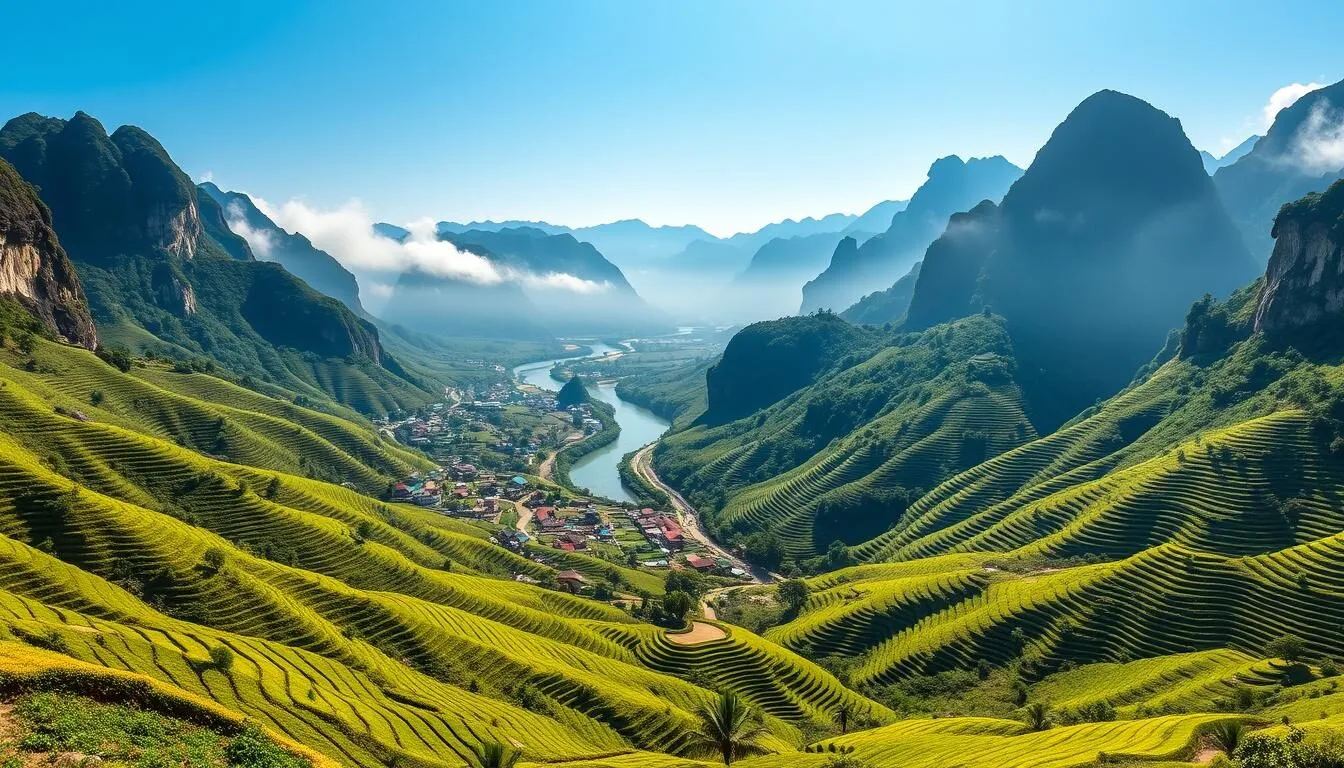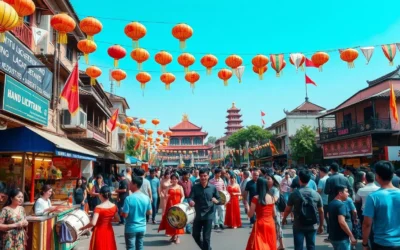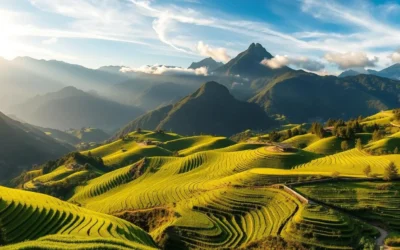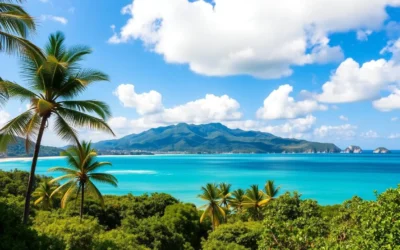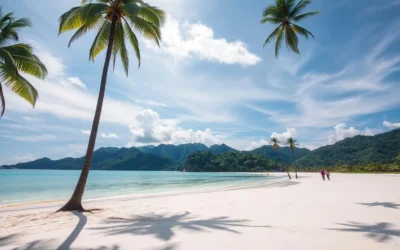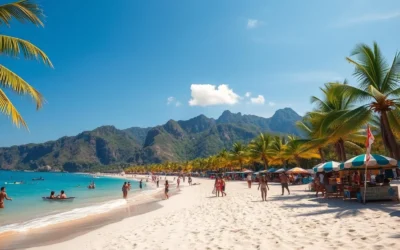✓ Accommodations✓ Flights✓ Rental Cars
Nestled in the mountains of Northeast Vietnam, Hà Giang province is a treasure trove of breathtaking landscapes and rich cultural heritage. With its dramatic limestone mountains, deep valleys, and winding roads, this adventure destination is a must-visit for thrill-seekers and nature lovers alike.
As you explore this remarkable region, you’ll have the opportunity to conquer the legendary Hà Giang Loop by motorbike, immersing yourself in local village life and experiencing the unique cultures of the ethnic minority groups that call this place home. Whether you’re looking for trekking adventures or simply want to soak up the stunning scenery, Hà Giang has something for everyone.
With its diverse climate and geography, this province is a true gem, offering an unforgettable travel experience that will leave you with lifelong memories.
Discovering the Hidden Gem of Northern Vietnam
Discover the untouched beauty of Hà Giang, a hidden gem in Northern Vietnam. This province is a treasure trove of natural wonders, boasting majestic landscapes that combine mountains, rivers, forests, and terraced fields. As you explore this region, you’ll be struck by the pristine beauty and the warm hospitality of the local people.
The Unique Geography of Hà Giang Province
Located in the far north of Vietnam, Hà Giang is characterized by its dramatic limestone karst formations and towering mountains that reach heights of over 1,500 meters. The winding roads of the Giang Loop offer motorbike adventurers breathtaking views as they wind through the spectacular mountain scenery. This rugged terrain has shaped the lives of local people for centuries, creating a unique cultural landscape that’s waiting to be explored.
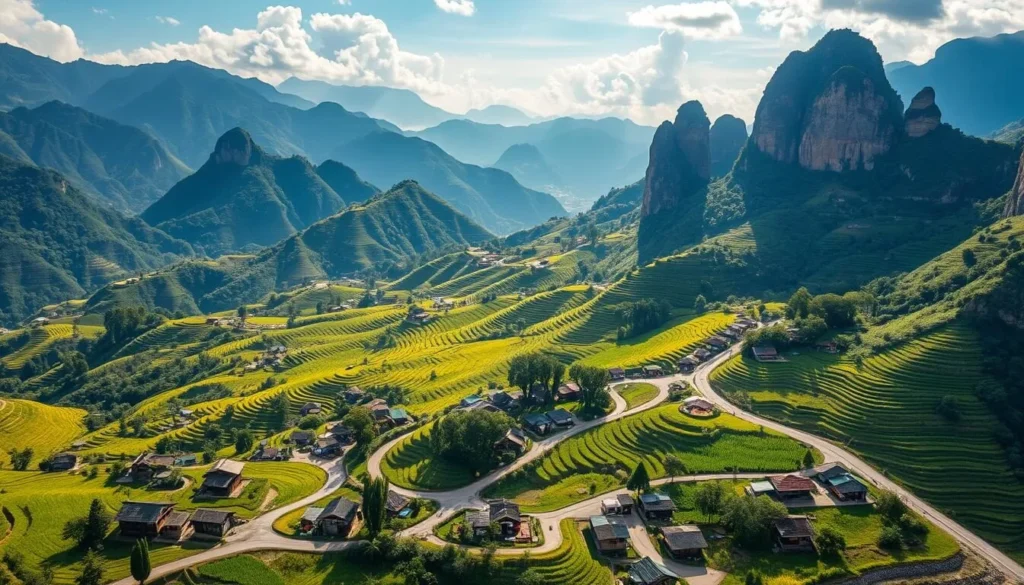
A Cultural Melting Pot of Ethnic Minorities
With over 20 different ethnic minority groups, including the Hmong, Dao, Tay, and Giay people, Hà Giang is a cultural melting pot. Each community has its own distinct language, traditional clothing, and cultural practices, shaped by their adaptation to the challenging mountain environment. As you tour the region, you’ll have the opportunity to experience firsthand the unique agricultural techniques and architectural styles of these diverse communities, enjoying an authentic and enriching experience.
The people of Hà Giang are known for their hospitality, making visitors feel welcome and at ease. Their simple, traditional way of life is a refreshing change from the hustle and bustle of city life, offering a chance to connect with nature and the local culture on a deeper level.
Best Time to Visit Hà Giang
When planning your trip to Hà Giang, understanding the best time to visit is crucial for a memorable experience. Hà Giang province offers a diverse range of experiences throughout the year, making it a great destination for travelers who enjoy different landscapes and cultural events.
Seasonal Highlights Throughout the Year
Each season in Hà Giang brings its own unique charm. In the spring, from February to April, the province is adorned with peach and plum blossoms, and ethnic minority groups celebrate traditional festivals. Summer, from June to August, brings lush green scenery as the rice terraces fill with water, although the heat and rainfall can be challenging. Autumn, particularly September to November, is considered the best time to visit, with mild and dry weather ideal for motorbike travel along the winding mountain roads. The buckwheat flower season in October and November adds to the picturesque landscape. Winter, from December to January, transforms Hà Giang into a misty wonderland, with fewer tourists but requiring warm clothing.
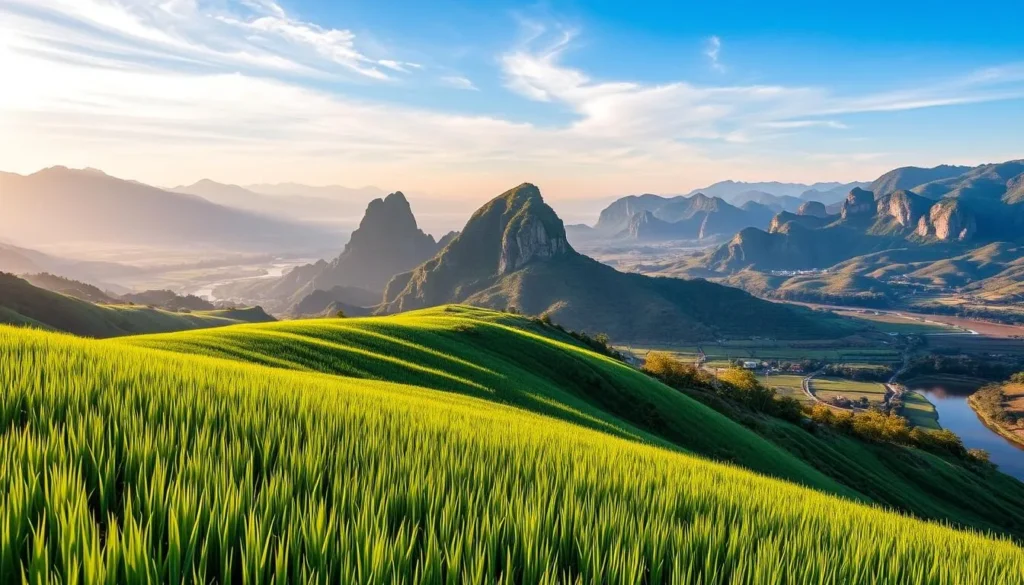
Weather Considerations for Your Trip
Understanding the weather is key to planning your trip. The best time to visit is between September and November, with comfortable temperatures and dry conditions. Summer can be hot, reaching up to 40°C, with frequent heavy rainfall. Winters can be cold, with temperatures below freezing, especially in the mornings and evenings. Packing accordingly and being prepared for the season’s weather conditions will ensure a smooth and enjoyable trip.
How to Get to Hà Giang
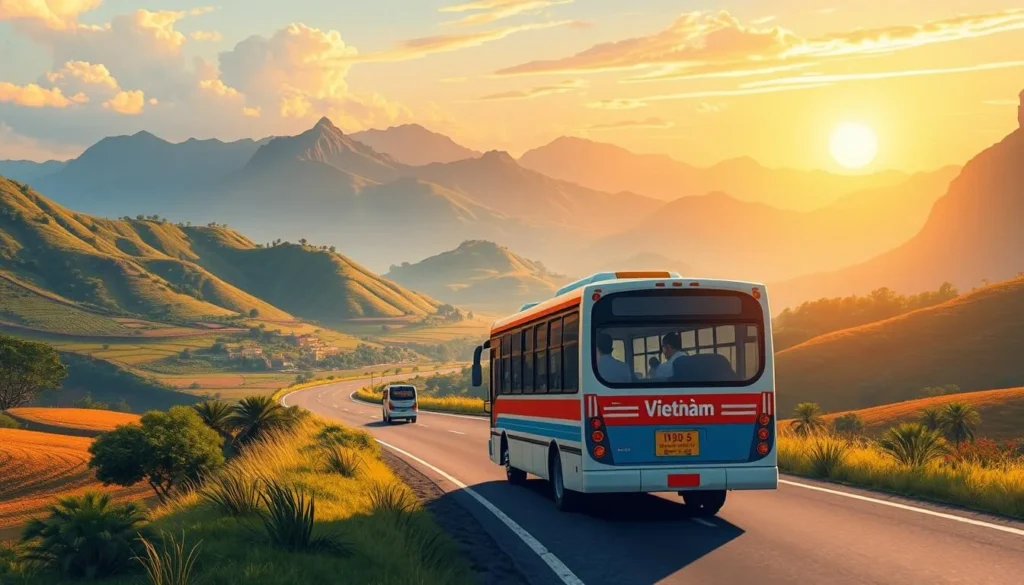
Planning your trip to Hà Giang requires understanding your transportation options. Since there’s no airport in Hà Giang, bus travel is the most common way to get there.
From Hanoi to Hà Giang
From Hanoi, you can take a sleeper bus or limousine van that takes approximately 6-7 hours. Most departures are scheduled between 16:00 and 21:00 from My Dinh bus station. Night buses are particularly popular as they allow you to save on accommodation and maximize your daytime for exploration once you arrive in Hà Giang city.
If you prefer more flexibility, you can rent a motorbike in Hanoi and drive to Hà Giang. However, this should only be attempted by experienced riders due to the challenging mountain roads.
From Sapa to Hà Giang
If you’re coming from Sapa, another popular northern Vietnam destination, there are regular bus services that take about 6 hours to reach Hà Giang. This makes it convenient to combine these two destinations in one trip. We recommend using 12GO for booking to secure the best deals and to check the reviews of transport companies.
Regardless of which route you choose, the journey to Hà Giang is part of the adventure, with stunning mountain scenery that gives you a taste of the beauty that awaits in this remote province.
The Legendary Hà Giang Loop – Ultimate Adventure
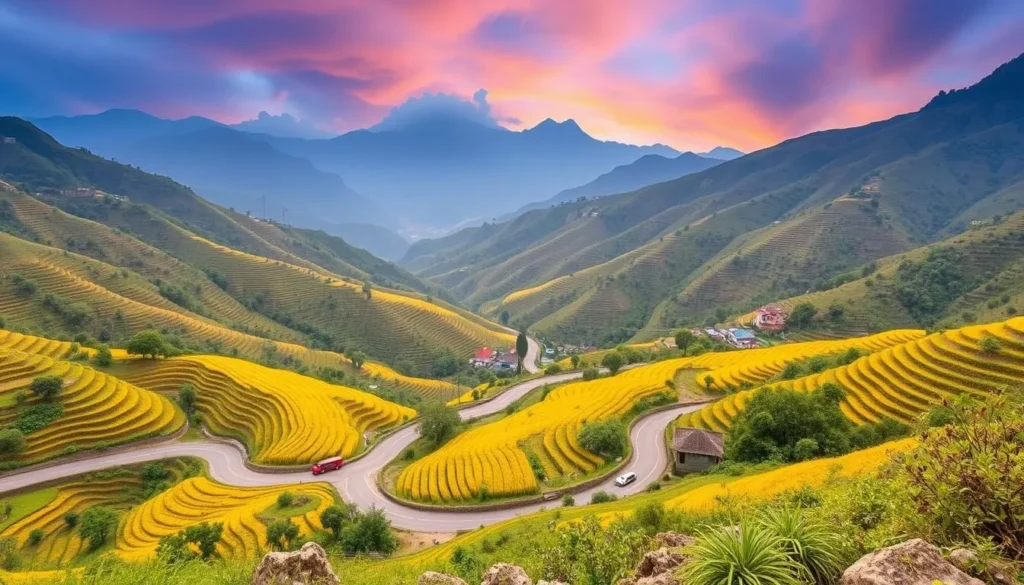
Discover the rugged beauty of northern Vietnam on the Hà Giang Loop, a 300-350km circular route that is as challenging as it is breathtaking. This adventure is not just about the destination; it’s about the journey, the people you meet, and the experiences you have along the way.
Popular Routes and Itineraries
The Hà Giang Loop offers two main routes: the standard loop through Đồng Văn and Mèo Vạc, and the alternative Hoang Su Phi route, known for its stunning rice terraces. The standard loop is the most popular choice, taking you through some of the most spectacular mountain scenery in Southeast Asia. Most travelers spend 3-5 days completing the loop, with the classic 4-day, 3-night itinerary offering the perfect balance between riding time and exploration.
Self-Drive vs. Easy Rider Options
When planning your Hà Giang Loop tour, you’ll need to decide whether to self-drive or hire an “Easy Rider.” Self-driving gives you more freedom and is less expensive, but it requires motorbike experience and confidence on challenging mountain roads. Hiring an Easy Rider costs more (around $25-35 per day) but provides valuable local knowledge and eliminates safety concerns, allowing you to focus on the experience.
Many tour companies offer group options where you can join other travelers, sharing the experience while reducing costs. Before setting out, ensure you have proper travel insurance that covers motorbike riding, as the remote nature of the loop means medical facilities are limited.
Whether you choose to self-drive or go with an Easy Rider, the Hà Giang Loop is an unforgettable adventure that will leave you with lifelong memories. With its stunning landscapes, rich cultural heritage, and warm hospitality, this journey is a must-do for any traveler looking for an authentic experience in northern Vietnam.
Conquering the Breathtaking Ma Pi Leng Pass
One of the most spectacular sections of the Hà Giang Loop is the Ma Pi Leng Pass, a 20km stretch of road carved into the mountainside. This pass is a thrilling experience for travelers, offering breathtaking views of the deep canyons and the Nho Que River below.
Viewpoints Not to Miss
The Ma Pi Leng Pass is home to several stunning viewpoints. The main Ma Pi Leng Pass Viewpoint offers a panoramic vista of the deep canyon below, where the emerald Nho Que River winds through the valley. Another must-visit spot is the Tu San Canyon Viewpoint, marked on Google Maps.
| Viewpoint | Description |
|---|---|
| Ma Pi Leng Pass Viewpoint | Panoramic view of the canyon and Nho Que River |
| Tu San Canyon Viewpoint | Stunning view of the Tu San Canyon |
Safety Tips for Navigating the Pass
When navigating the Ma Pi Leng Pass, it’s essential to drive slowly and use your horn before blind corners. The narrow road with sheer drops requires full attention, especially during bad weather or foggy days. Consider taking a bus tour or hiring an experienced local driver if you’re not comfortable driving this challenging section yourself.
For a memorable experience, visit the pass early in the morning or late in the afternoon when the light is golden. The misty mountains create an ethereal landscape, making it a photographer’s paradise.
Cruising the Turquoise Nho Que River
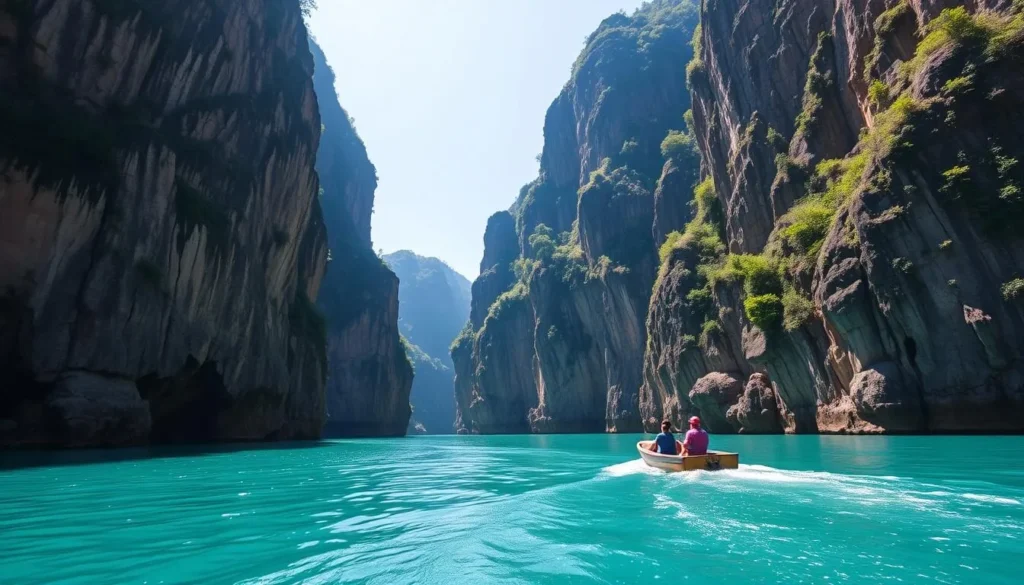
The Nho Que River, with its turquoise waters, offers a serene and breathtaking journey through the heart of Hà Giang. As you cruise along the river, you’ll be surrounded by towering limestone cliffs that create a stunning contrast against the emerald green water.
Boat Trip Experience and What to Expect
During your boat trip on the Nho Que River, you can expect a peaceful and relaxing experience. The journey typically lasts about 45-60 minutes and costs around 100,000-150,000 VND per person. Boats depart regularly from the small dock, which can be reached via a steep path down from the main road. To access the dock, you’ll need to park your motorbike at the designated area and then either walk down approximately 1,500 steps or take a shuttle service provided by some operators for an additional fee.
As you glide along the river, keep your camera ready to capture the dramatic scenery, including local fishermen working on traditional bamboo rafts and water buffalo cooling off near the shoreline. The calm water on windless days creates a perfect reflection of the surrounding mountains, making for some incredible photo opportunities.
Best Photo Spots Along the River
The Nho Que River offers numerous photo opportunities, especially during the golden hours of early morning or late afternoon when the light creates dramatic shadows on the canyon walls. Some of the best spots include the towering cliffs, traditional bamboo rafts, and the serene riverbank where local life unfolds.
Exploring the Dong Van Karst Plateau UNESCO Global Geopark
The Dong Van Karst Plateau UNESCO Global Geopark is a must-visit destination in Hà Giang, offering breathtaking landscapes and unique geological formations. Spanning over 2,300 square kilometers, this geopark is a testament to the region’s natural beauty and geological history.
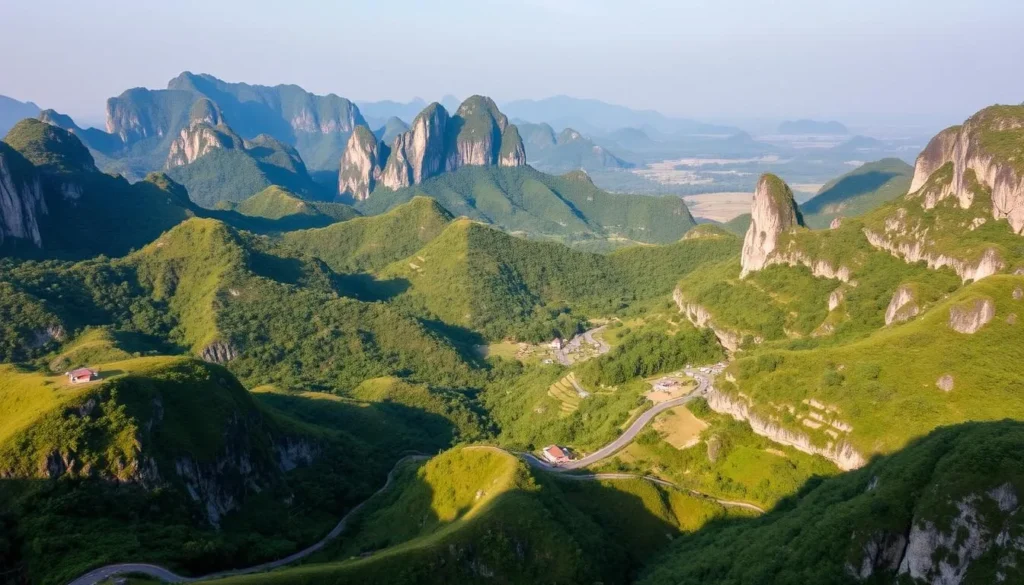
Geological Wonders to Discover
The geopark features a “stone forest” of limestone formations that date back 400-600 million years, providing a glimpse into Earth’s ancient geological history. The exposed rock layers and fossil records are a treasure trove for geologists and enthusiasts alike. As you explore the geopark, you’ll be struck by the dramatic landscape of limestone peaks and valleys.
Trekking Opportunities in Dong Van
For those who love trekking, the Dong Van Karst Plateau offers numerous trails that lead to remote villages, hidden caves, and panoramic viewpoints. Unlike more touristy destinations like Sapa, the hiking trails around Dong Van are more rugged and less developed, offering an authentic experience. Popular trekking routes include the trail to Lung Cu Flag Tower, the path to Ma Pi Leng B viewpoint, and various village-to-village hikes that can be arranged with local guides.
As you trek through the geopark, you’ll have the opportunity to experience the local culture and way of life. The geological diversity of the region has directly influenced the cultural diversity, with different ethnic groups adapting to life among the limestone mountains. Be sure to visit the ancient Dong Van Old Town, with its preserved stone buildings dating back to the 1920s, especially on Sunday when the weekly market brings the streets alive with color and activity.
Immersing in Local Culture and Traditions
Immersing yourself in the local culture of Hà Giang is a rewarding experience that allows you to connect with the community. The province is home to more than 20 ethnic minority groups, each maintaining their traditional ways of life in the remote mountain villages.
Visiting Colorful Ethnic Markets
Visiting a Hà Giang market is one of the most convenient ways to see vibrant ethnic minorities. The weekly mountain markets are a distinctive and vibrant event where local products, food, apparel, and farm animals are traded. Some of the notable markets include:
- Sa Phin Market
- Dong Van Market: Sunday
- Meo Vac Market (the biggest and most impressive market): Sunday
- Du Gia Market: Saturday
At these markets, you’ll witness people selling local goods like traditional clothing, fresh food, and even farm animals. It’s a great way to experience the local culture and interact with the locals.
Homestay Experiences with Local Families
Staying in a homestay with a local family provides the most authentic cultural experiences. You can participate in daily activities like cooking traditional meals, helping with farm work, or learning about textile production. Most homestays in the region are simple wooden or stilt houses with basic amenities, but they offer warmth and hospitality. The food you’ll encounter reflects the agricultural traditions of the region, with dishes featuring mountain rice, corn, and local herbs.
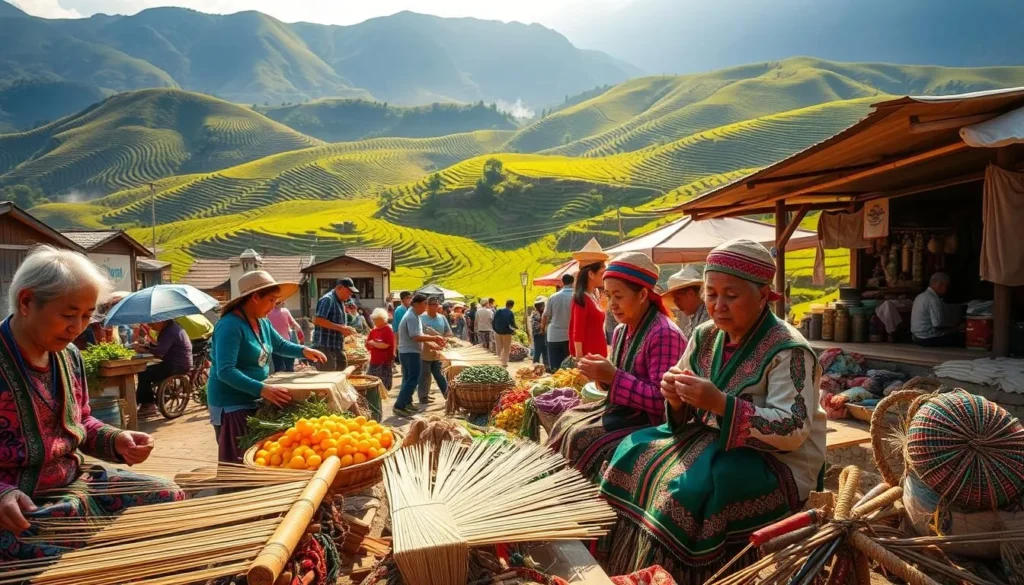
Chasing the Pink Buckwheat Flower Fields
The beauty of Hà Giang is on full display from September to December, when buckwheat flowers blanket the valleys and mountainsides. This period is the perfect time to visit and experience the gentle charm of these flowers.
Best Locations and Blooming Season
From late September through November, the rocky landscapes of Hà Giang transform into a photographer’s dream as fields of triangular buckwheat flowers bloom in shades of pink and purple across the karst plateau. The best locations to see these flowers include the areas around Lũng Cú flagpole, the valleys near Đồng Văn, the hillsides of Sủng Là village, and along parts of the road between Yên Minh and Đồng Văn. These delicate flowers are actually a food crop planted by local farmers after the rice harvest.
Photography Tips for Capturing the Fields
To capture the beauty of the buckwheat flowers, plan your visits for early morning or late afternoon when the soft light enhances the pink hues. Bring a wide-angle lens to capture the vast fields against the backdrop of karst mountains, and consider using a polarizing filter to enhance the contrast between the pink flowers and the blue sky. Local ethnic minority people, particularly Hmong women and children in traditional dress, often visit the fields, creating opportunities for cultural photography.
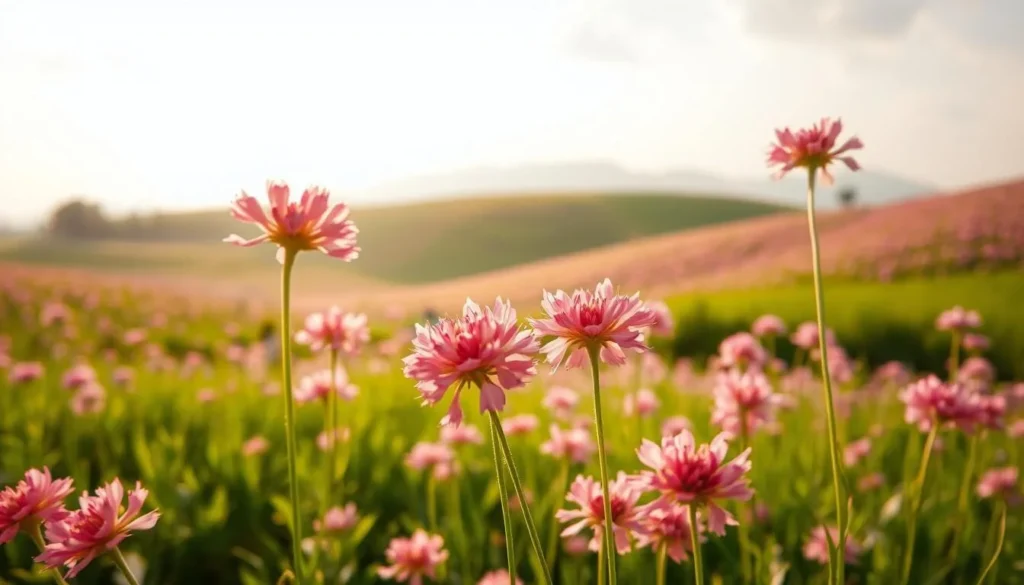
Must-Visit Viewpoints in Hà Giang
As you embark on your Hà Giang adventure, you’ll encounter breathtaking viewpoints that will leave you in awe. The region is home to some of the most spectacular vistas in Vietnam, and we’re about to take you on a tour of the most iconic ones.
Quan Ba Heaven Gate
The Quan Ba Heaven Gate is a stunning viewpoint that marks the entrance to the Hà Giang Loop. At an elevation of about 1,500 meters, it offers sweeping views of the valley below and the famous “Fairy Mountains” (Twin Mountains). The road to this viewpoint can be challenging, so it’s best to visit on a sunny day when the fog clears.
Must-see attraction: The Twin Mountains, also known as Co Tien Mountain, is a breathtaking sight that will leave you mesmerized.
Lung Cu Flag Tower
Located at the northernmost point of Vietnam, the Lung Cu Flag Tower is a powerful symbol of national pride. The tower stands at 1,470 meters above sea level, and the viewing platform offers a 360-degree panorama of the surrounding mountains and valleys. You can see the massive Vietnamese flag flying atop a 30-meter tower, and on a clear day, you can even see into China.
Opening hours: 8:00 AM to 5:00 PM daily, including holidays.
Hidden Gems Off the Beaten Path
Beyond the famous viewpoints, Hà Giang hides numerous lesser-known spots that are worth exploring. Take a short hike to the “secret viewpoint” along the road between Mèo Vạc and Đồng Văn, and you’ll be rewarded with an unobstructed view of the Nho Que River winding through the canyon below.
| Viewpoint | Location | Best Time to Visit |
|---|---|---|
| Quan Ba Heaven Gate | Quan Ba District | Sunny days |
| Lung Cu Flag Tower | Lung Cu Village | Early morning or late afternoon |
| Secret Viewpoint | Between Mèo Vạc and Đồng Văn | After a short hike |
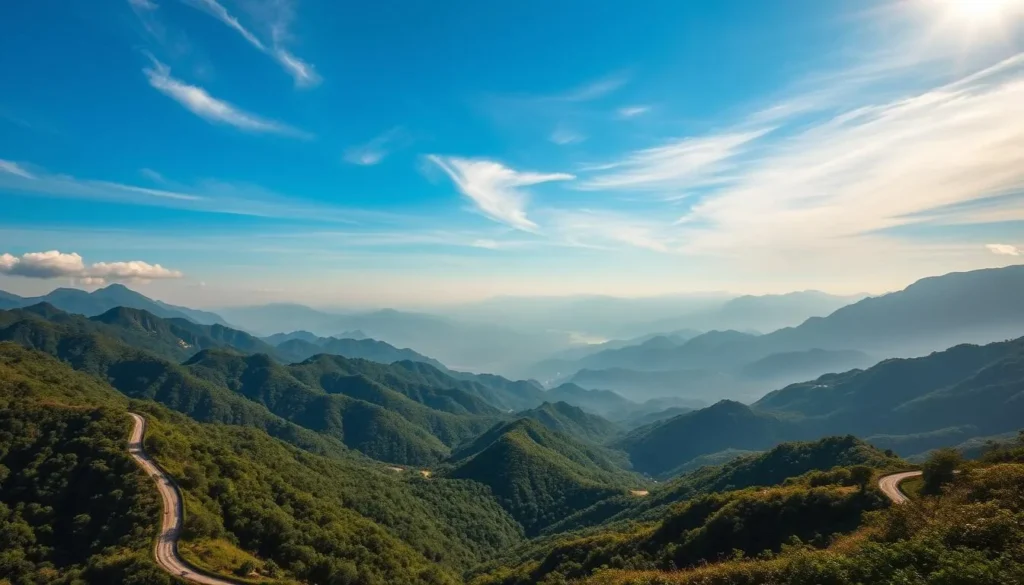
As you explore these viewpoints, you’ll be struck by the natural beauty of Hà Giang. Whether you’re on a motorbike tour or simply taking in the views, the region’s majestic mountains, winding roads, and stunning passes will leave you in awe.
Where to Stay During Your Hà Giang Adventure
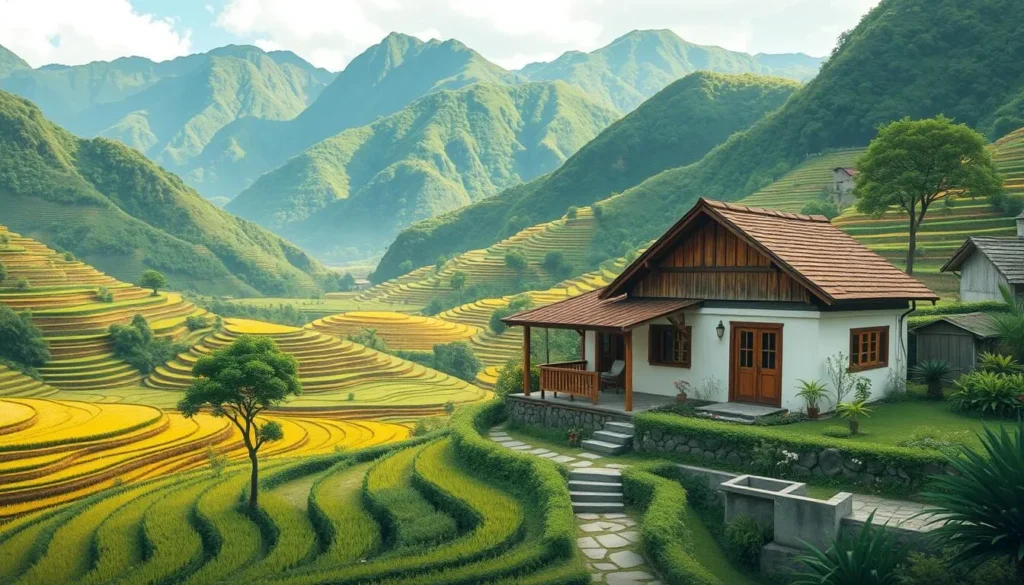
As you prepare for your Hà Giang adventure, understanding your accommodation options can greatly enhance your travel experience. Hà Giang City serves as the starting and ending point for most loop adventures, offering a range of accommodation options from budget hostels catering to backpackers to more comfortable hotels where you can rest before and after your journey.
Accommodation in Hà Giang City
Popular choices in Hà Giang City include QT Motorbikes & Tours, Lotus Hostel, The Palm Hà Giang Ecolodge, and NoMadders Hà Giang, all of which cater specifically to travelers planning to explore the loop. If you’re joining a motorbike tour, these options provide convenient access to rental services and tour information.
Homestays Along the Loop
Along the loop, the main overnight stops typically include Yên Minh, Dong Van, Mèo Vạc, and Du Gia, each offering different accommodation styles from basic guesthouses to more authentic homestays with local families. Homestays provide the most culturally immersive experience, where you’ll sleep in traditional homes, share family-style meals, and gain insight into local daily life.
What to Expect from Local Accommodations
Most tour operators have established relationships with specific homestays, so if you’re joining a guided group tour, your accommodations will be pre-arranged, typically including dinner and breakfast with local dishes like rice, meat, tofu, and fresh vegetables. While homestays are rich in cultural experience, they often feature basic amenities, so adjust your expectations accordingly.
Conclusion: Why Hà Giang Should Be on Every Traveler’s Bucket List
Discover the untouched beauty of Hà Giang, a province that embodies the essence of Vietnam’s natural and cultural splendor. Hà Giang represents the Vietnam that many travelers dream of discovering – a place where dramatic landscapes meet authentic cultural experiences, far from the well-trodden tourist paths.
The Ha Giang Loop offers an adventure that combines the thrill of motorbiking through mountain passes with opportunities to connect with ethnic minority communities whose ways of life have remained largely unchanged for generations. Whether you choose to self-drive, hire an Easy Rider driver, or join a guided tour, the 3-5 days spent exploring this region will likely become the highlight of your entire Vietnam journey.
With its perfect blend of natural beauty, cultural immersion, and adventure, Hà Giang deserves a place on every traveler’s Vietnam itinerary. As tourism continues to develop in Hà Giang, now is the ideal time to visit – infrastructure has improved, but the region still retains its authentic character. Whether you have three days or can extend to five, Hà Giang is an experience that will leave a lasting impression on your travels.
The above is subject to change.
Check back often to TRAVEL.COM for the latest travel tips and deals.
